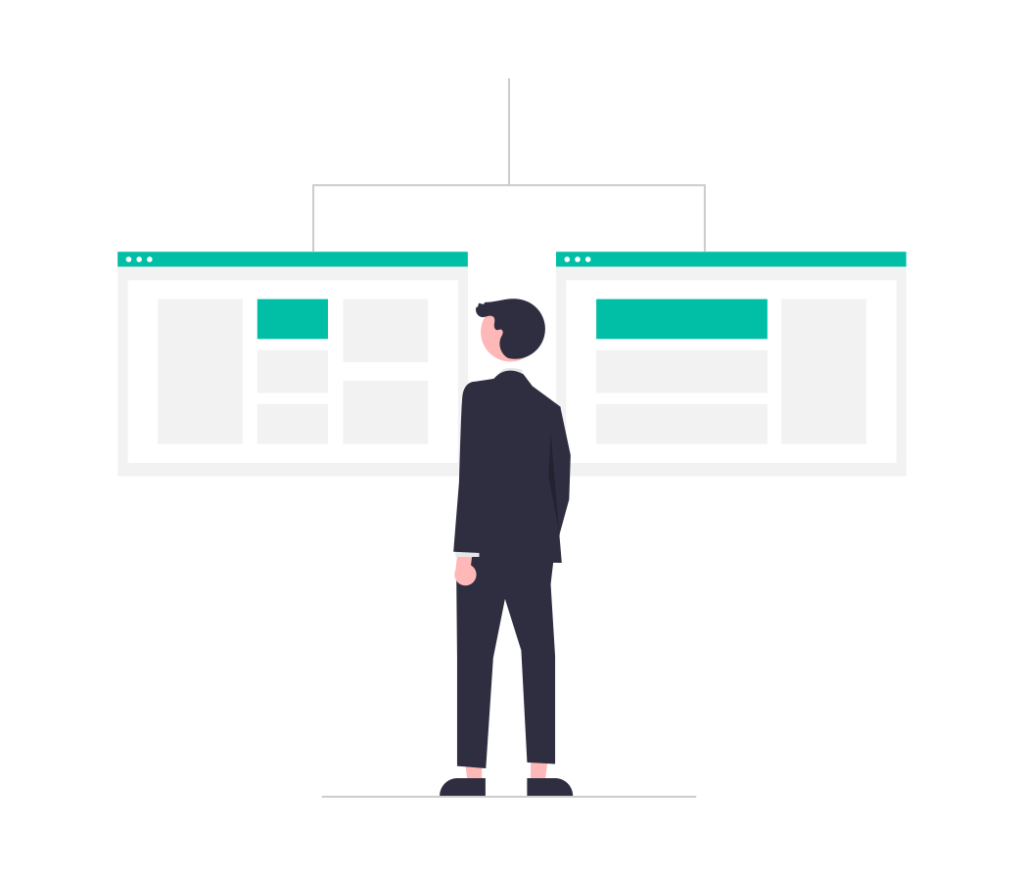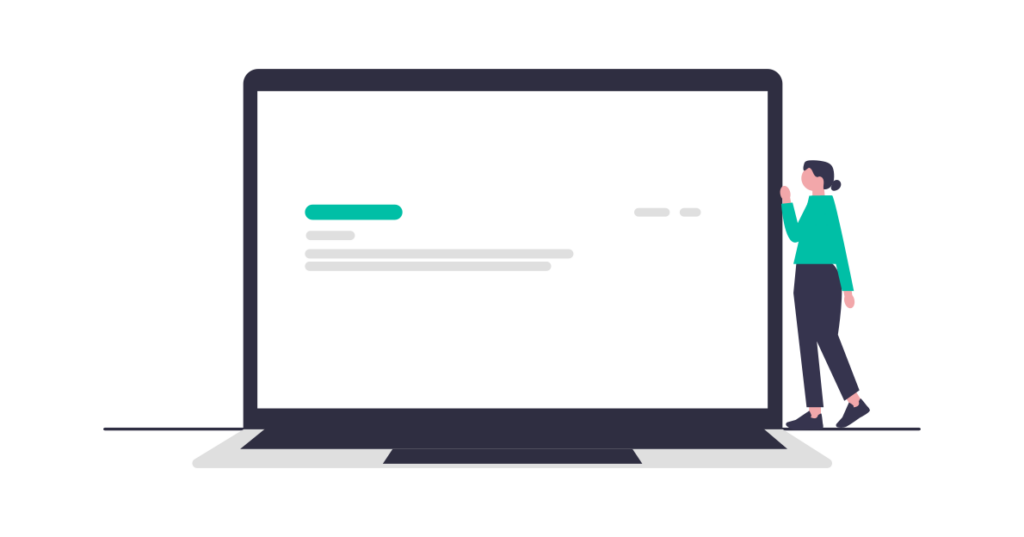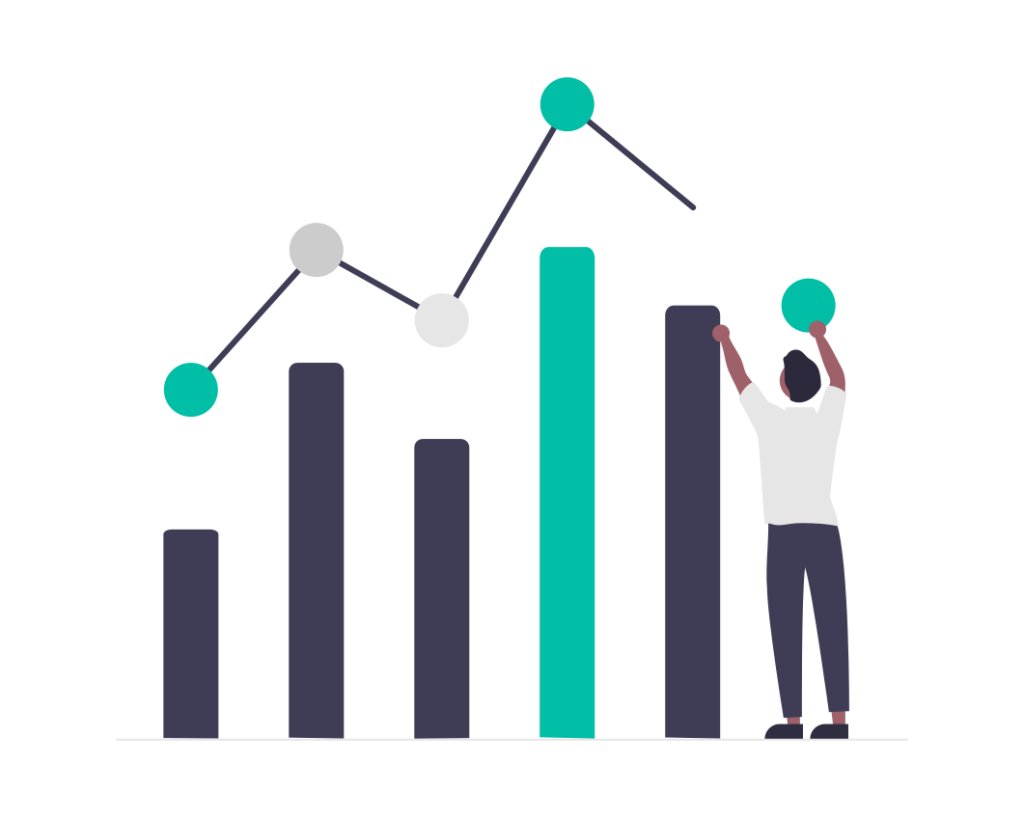A Cookieless Future: Is Your Marketing Ready For The Post-Cookie, Post-Pixel World?

Cast your mind back to 2013, if you can. I know, it’s difficult, a lot of fairly important changes in the world have happened since then. But bear with me.
1. In October of 2012 Google announced Universal Analytics, which gave us cross-platform tracking and custom dimensions and metrics.
2. Then, in early 2013, the Facebook Pixel launched. More specifically, the Facebook Conversion Pixel and Website Custom Audience Pixel (now they function under the same ‘Facebook Pixel’ banner). The Facebook Pixel was a bit of code that you dropped on your site which allowed you to track what users from Facebook did on your site, optimise your ads based on key actions, and target users similar to those who took a desired action.
Holy moly, us digital marketers thought. That’s bloody handy.
‘Half the money I spend on advertising is wasted; the trouble is I don’t know which half’ said John Wanamaker once upon a time. Well by jove in 2013 we thought we’d solved it. We could see, with excruciatingly granular detail, what people did after clicking on our ads. We could create incredibly targeted audience groups and we could analyse exactly what people did on our websites.
Fast forward 8 years. 2021 sees a seismic Apple IOS14 update which dramatically slashed Facebook’s ability to track and target iPhone users (who make up a big chunk of most of our audiences) and now, in 2022, Google finally announces the end of Universal Analytics – kindly giving us just over a year to get to grips with GA4.
Uh-oh. The sky is falling. There’s a cookieless, post-pixel meteor heading towards the world of digital marketing, the dolphins are leaving, and we cry to the heavens ‘won’t anybody please think of the digital marketers!?’
For growth marketing agencies like ourselves attribution and tracking is pivotal, however, unfortunately for us, most people just don’t give a toss. In fact, many people are actively glad that their phones and browsers can’t spy on them and bombard them with digital display ads quite so vigorously. We’re not high on their priority list.
But, we’re all in this together. And no, the sky isn’t falling. The world isn’t ending. We’re just going to have to think about attribution differently. I can’t really picture that as a headline in the New York Times, can you?
What Is The Difference Between First And Third Party Cookies?
To understand a cookieless world, we’re first going to have to define some terms. Let’s start with cookies. Cookies are little snippets of text files that websites save to your browser. There are two main types: first party cookies and third party cookies.
- First party cookies live on the site you are currently visiting and the data they collect is owned by that site.
- Third party cookies (AKA tracking cookies) originate from a different site and follow you around the site on your browser.
Both first and third party cookies collect user data. A first party cookie collects data from the user directly by and for the user/owner of the site. They may collect and store information such as usernames and passwords, for faster logins, items added to shopping carts, or analytics data for Google Analytics.
A third party cookie is placed by someone other than the website owner and collects data for that third party.
Therefore the difference between first and third party data is ownership. First party data is owned by the website/app owner. Third party data is owned by someone else. No-one is talking about phasing out first party data – indeed, it’s what the web will rely on after third party tracking, cookies and data collection are phased out.
What Is The Difference Between Cookies & Pixels?
In the past few years marketing analytics and targeting has heavily relied on the use of pixels. Pixels, in many ways, are similar to cookies – they track user behavior across websites for the purpose of targeting and measuring ads. The difference between them is where that information is stored and how the information is delivered. Cookies are appended by a site to an individual’s browser. They can be opted out of by the user or cleared within the browser, and can’t track activity across devices.
Tracking pixels, on the other hand, send user information directly to servers so they don’t rely on one individual browser. That’s why they’ve been so powerful for the advertising industry. They’re not easily opted out of or cleared like cookies are.

What Changes Are Coming For Cookies & Pixels?
Through GDPR, the IOS14 update and the transition away from Universal Analytics the general trend is – more privacy.
Less cookie and pixel-based data collection and sharing across platforms. Less third party data and tracking, which sites already have to ask permission for, and more focus on first party data.
Third party tracking cookies and pixels are being actively phased out or becoming less useful. The browsers Firefox and Safari already block tracking cookies. Google Chrome, the most popular browser, is likely to do so in 2023 (hence their deadline for the global switch over to GA4). Plus, with changes like the IOS 14 update in 2021, pixels are likely to become less effective at building audiences and tracking behavior as more and more companies decide to opt their users out of sharing data with pixels.
There are two main results of this in the short term for digital marketers:
1. More restricted targeting. Ad platforms will become gradually more restricted in building audience groups based on user behavior across websites and across devices. We’ve already seen this start happening – some audiences shrunk by about 40% with the IOS 14 update which crippled the Facebook Pixel’s ability to capture data about user behavior on iPhones. It’s the same story with tracking cookies – it’ll be less easy to collect data about how people browse away from your site, and therefore less easy to build audience lists based on interests and behaviors.
2. More restricted measurement of results. Because it’ll be less easy to track what users do across different sites, browsers and devices, attributing conversions will become more difficult on some ad platforms. Which means getting a clear picture of ROAS for some campaigns could be harder than it was before.
We spoke to James Smith at The Search Mechanics, a specialist PPC agency, about his view of the changes. He argued that the changes A) aren’t really being brought in because the big tech companies care about privacy and B) probably won’t affect advertisers and consumers too much in the long run:
“Much has been made of the recent changes to third party cookie usage – both the purported benefits to customer privacy and the claimed negative impact this will have on marketing. Peel back the layers, however, and it is hard not to be both cynical about the motivations behind the changes, and sceptical about their real-world impact.
While Apple have trumpeted the benefits of consumer privacy, their decision to restrict third party cookies by apps on Apple devices has had a significant negative impact on one of their largest indirect competitors, Meta – wiping $10bn off of their value, by some estimates. Google have been somewhat slower on the uptake, belatedly announcing that third party cookies will also be blocked by Chrome in the future. Here, though, there are concerns that this will serve primarily to give Google even greater control over the online ad ecosystem, due to the massive amount of first party data they are able to accumulate – effectively forcing smaller competitors out.
There are also serious question marks over how much of a benefit this will really be to users. Workarounds are already being developed which have privacy concerns just as bad as before, and Google themselves have recently launched server side tracking, which allows websites to effectively bypass all third party cookie restrictions entirely and is even more opaque to consumers and auditors.
There were some panicked headlines in the days after Google made their big Chrome announcement (and certainly for some smaller ad tech firms the changes may prove disastrous) but in truth, we don’t see this as something that is going to have a major impact on either advertisers or consumers. The real winners here may be, once again, the big tech companies.”
How Does Cookieless Tracking Work With GA4?
It’s all well and good saying that the cookie has crumbled, and that pixels aren’t as good anymore. But tracking isn’t stopping altogether. How will it work in future? The best way to illustrate this is with GA4. Google’s big privacy-focused project.
GA4 has been billed as a privacy-centric tracking tool that works on websites and apps, and has been designed to function both with cookies and without to aid brands with the transition.
GA4 currently relies on first party cookies, which are more acceptable under current legal frameworks and give the platform a lot of data about how people behave on your site without tracking them elsewhere. But beyond that, the platform is going to rely on machine learning to fill gaps and give you a picture of, what they call, ‘blended data’.
They’re fairly vague about how this will work. Google said this in their blog:
“Because the technology landscape continues to evolve, the new Analytics is designed to adapt to a future with or without cookies or identifiers. It uses a flexible approach to measurement, and in the future, will include modeling to fill in the gaps where the data may be incomplete. This means that you can rely on Google Analytics to help you measure your marketing results and meet customer needs now as you navigate the recovery and as you face uncertainty in the future.”
Read that, read it again. Still not sure how exactly it’s going to work? I don’t blame you. It’s pretty vague. All of this is being hashed out in their Privacy Sandbox. The overall message is: we’re preparing for a cookie-less future, so should you.
Previously, Google had been bigging up a new project called FLoC – Federated Learning of Cohorts. This was to be the big innovation that would remove the need for cookies altogether. With it, Google would simulate user data rather than use real cookies. Here’s what they said about it:
“When it comes to generating interest-based audiences, FLoC can provide an effective replacement signal for third-party cookies. Our test of FLoC to reach in-market affinity and affinity Google Audiences show that advertisers can expect to see at least 95% of conversions per dollar spent when compared to cookie-based advertising. The specific result depends on the strength of the clustering algorithm that FLoC uses and the type of audience being reached.”
But then…. They mothballed it. FLoC is no more. Clearly, Google lost confidence that it could work.
They replaced it with the idea of Topics. Topics would enable Google Chrome to learn about a user’s behaviour as they browse the web, recording information from their behaviour across three weeks. Topics will then assign a user specific ‘interests’ drawn from a list of 300 possible options. When a user goes to a site that supports Topics for ads, the browser will pull three topics that the user has shown interest in, and allow the website to share these topics with advertisers. Think ‘fitness’ or ‘food’. Advertisers can then use that info to display theoretically relevant ads without having to get into the world of granular user data or identifiers.
Topics is still a work in progress. It’s clear that Google still isn’t entirely sure how they’re going to handle a cookieless world from an ad serving perspective. The proposed solutions seem more private than cookie-based tracking, but we’ll see if that lasts.
What Should Marketers Do About the Cookieless Future?
Well, it’s a difficult question to answer with certainty. Even Google isn’t sure about it. But here are some pieces of advice based on everything we know:
Action Number 1: Don’t Panic!
Firstly, although the waters seem murky now, some very big companies that employ some very big brains with some very big salaries are working on how to serve and measure targeted ads without the benefit of third party cookies. Lorenzo Luiso at Brick Digital, a digital agency in Hertfordshire, has confidence that a technological answer will emerge…
“I think the move away from third-party cookies will of course have an impact on the digital advertising and marketing industry in general. However, as an industry, we are very well accustomed to constant change in the way we do things, the technology we use, and the platforms we operate on.
Which is why I expect all of the negative impacts that may come with it, like smaller less-targeted audiences and complexities with tracking and attribution, to be negated by new software and technology that allows us to continue with strategies that previously worked simply using different platforms.”
It’s likely he’s right. Digital advertising is a huge industry and there are huge financial incentives to find a way to target and measure advertising in a privacy-centric way. Necessity is the mother of invention, after all.
And, it’s worth emphasising…. Third party cookies weren’t all that good anyway.
Cookie matching to ad platforms was always imperfect, averaging around 40-60%. That’s why everyone has stories of being targeted with completely bizarre ads that have only a tangential-at-best relationship to their browsing behaviour.
And on top of this, cookies can’t track user behaviour across devices. So if someone switches browsers or devices, you can’t track what they’re doing. Advertising that relies on third party cookies right now is probably not working all that well for you. So please, don’t panic.
Action Number 2: Install GA4
Even though it’s still not working that well, and you may be so used to Universal Analytics that switching makes you feel confused, angry and hurt, now’s the time to install GA4. It will improve with time and the earlier you switch, the more time you have to get used to it before your hand is forced.
You’ll also have historic data to compare once UA is turned off if you’ve installed GA4 long before.
So install GA4, have a play around with it, and keep an eye on updates from Google.

Action Number 3: Get Your First Party Data In Order
We spoke to Harry Dance at Kayo Digital, a digital agency in Kent. Here’s what he had to say:
“The value of owning your own data has become that much more treasured since the future of the pixel and the cookie is unclear. No longer can people rely solely on third-party tracking mechanisms and a sensible way to future proof your marketing is by using cookieless tracking (like GA4) and growing an email database/loyalty program.”
It’s a recurring theme. “Once third-party cookies are phased out, we will not build alternate identifiers to track individuals as they browse across the web, nor will we use them in our products.” said David Temkin, Google’s director of product management for ads privacy and trust.
There are a lot of ad platforms that are working on user identity based tracking mechanisms. But it’s clear Google doesn’t believe that they will cut it from a privacy perspective and aren’t entertaining the idea any more. Easy for them to say, they own just about a bajillion gallons of first party data. But Google will set the tone on this, so they’re worth listening to.
So collecting really good first party data (through your onsite or in-app analytics, and through user data in your CRM) is going to be vital over the next year. You’ll need to leverage this data by tailoring user experience to maximise conversion rates, and implementing effective email, push notification, referral and loyalty programmes.
Action Number 4: Think About Your Strategy & Creative
Not a technological suggestion, but an incredibly important one: get your strategy and creative right.
Before getting into digital and growth marketing, I had a background as a creative strategist, so maybe I am biased. But it stands to reason: if you can’t target users with the same extreme granularity as before, having your ads stand out to your relevant users because your positioning, messaging and creative is perfect for them will become increasingly important.
So how do you do that? You do research. You run quantitative and qualitative research to discern how your users think and where they spend their time. You create a strategy focused on reaching those users who are most likely to buy from you, based on real data (not ‘I reckon’ statements four coffees in). You create a positioning based on what those users really need. And you produce creative which nails that positioning.
Again, it feels like we’re going back in time a bit here to the world of Mad Men. But it works, and it’s worth thinking about now.
Action Number 5: Understand the limits of attribution
It’s already the case that digital attribution is imperfect. With a great analytics set up, and a well-considered attribution model in place, you can get a fairly solid idea of how your various marketing channels are performing and how they interact with your funnel. But as we wrote in this blog about measuring marketing campaigns, it often doesn’t tell the whole story.
Even if you’re able to track a user across multiple browsers, sessions and devices, and see what touch points they interacted with, judging the impact of those various touch points ultimately comes down to guesswork. You can assign an attribution weighting in Google Analytics – last touch, first touch, points based etc – but ultimately you’re choosing a weighting based on what seems right to you. You’re still influencing the data with your ‘I reckon’ choices.
Judgment calls are going to become more important as those attribution models are able to draw on less user-level data and rely more on machine learning. Which is why marketing training, experience and instincts will still play a huge role in determining the right channel mix for your business.
Growth Division’s Verdict
In summary: our industry is going to change a lot over the next year to 18 months. There will be new ad tech platforms that appear to offer the world, but in reality fail due to regulations, technological barriers, or under adoption.
So while we wait for a miracle solution, we need to get our own houses in order. Prepare for cookieless analytics, start collecting quality first party data, and get our marketing strategy clear. After that, we can all gather round the fire and sing Kumbaya, My Lord while we wait for the tech giants to figure it out.
Talk to a Growth Advisor
We create a clear, focused marketing strategy by combining our expertise with your knowledge of your business.
Related Posts

What Is a Growth Marketing Manager?
Discover the ins and outs of the role of a Growth Marketing Manager.

Harness the Power of Growth Marketing for Business Success
Learn how to harness the power of growth marketing to propel your business to new heights of success.

How to Build Long-Term Sustainable Growth
Learn the essential strategies and practical steps to achieve long-term sustainable growth for your business.
